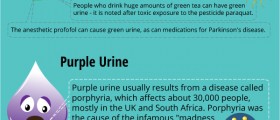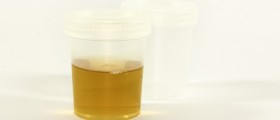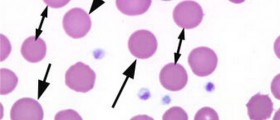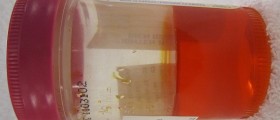
Jaundice is a condition that often occurs in babies, children, as well as in adults. This is not an illness itself, but rather a medical condition characterized by high levels of bilirubin in the blood. Bilirubin, also known as hematoidin, is a yellowish compound and a normal product of heme catabolism. Heme is a compound of hemoglobin, which is the main component of red blood cells. Hemoglobin is an iron-containing oxygen-transport metalloproteinase, which produces bilirubin in the process of degradation. Bilirubin is excreted in bile and urine, and it normally causes yellowing of the bruises, the yellow color of urine, the brownish color of feces and characteristic yellow discoloration in jaundice. Jaundice is best described as a yellow color in the skin, mucus membranes or eyes.
Symptoms of jaundice in children
The main symptom of jaundice is yellow discoloration of skin and conjunctiva of the eyes. Conjuctiva is a clear mucous membrane that covers the eyelids. When it becomes yellowish, it usually indicates changes in the normal levels of bilirubin. Babies suffering from jaundice can also have low energy levels, and they may seem to be very sleepy all the time. Consequently, this leads to poor feeding and babies often become dehydrated and undernourished. Child’s urine will typically appear darker than normal and the stool will have characteristic chalky appearance.
Causes of jaundice in children
Jaundice is quite normal in infants and, in most of the cases; it appears if a baby’s liver is slow when it first starts to convert bilirubin. This form of jaundice affects more than half of all babies and it usually resolves by the time baby is 10 days old. Sometimes, jaundice happens when baby swallows blood during delivery or if there is any bruising during birth.
Sometimes the reasons behind this condition are more serious and involve low levels of thyroid or pituitary gland hormones. Moreover, certain inherited problems such as Najjar syndrome, Gilbert's syndrome, galactosaemia and tyrosinaemia, may also cause jaundice. If this is the case, problems with jaundice occur together with problems with enzymes that are supposed to break down bilirubin.In adults, problems with jaundice usually indicate problems with liver. However, children may also suffer from liver problems. For example, if a child has biliary atresia, the tubes that exhaust bile from the liver are blocked and the excessive bilirubin enters the bloodstream, instead of being carried away.
Autoimmune hepatitis can also cause jaundice in children. In this condition, immune cells mistake, the liver’s cells for harmful invaders and attack them constantly. As a result, the cells die and the levels of the bilirubin rise. This disease is more common in young girls.














-And-Children-16-Warning-Signs-And-Symptoms_f_280x120.jpg)


Your thoughts on this
Loading...